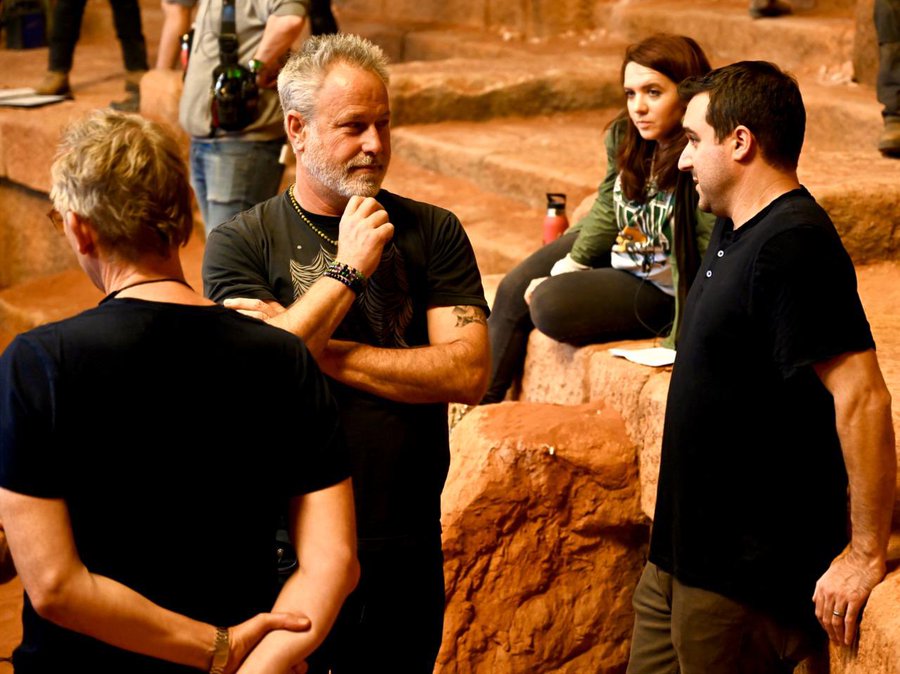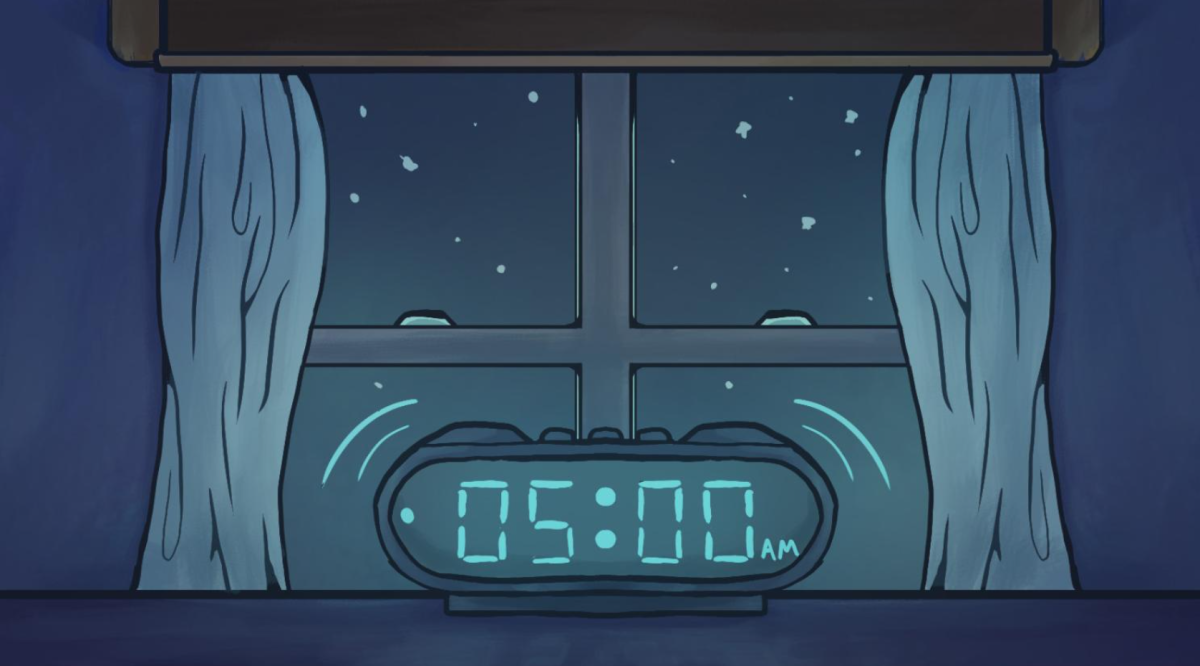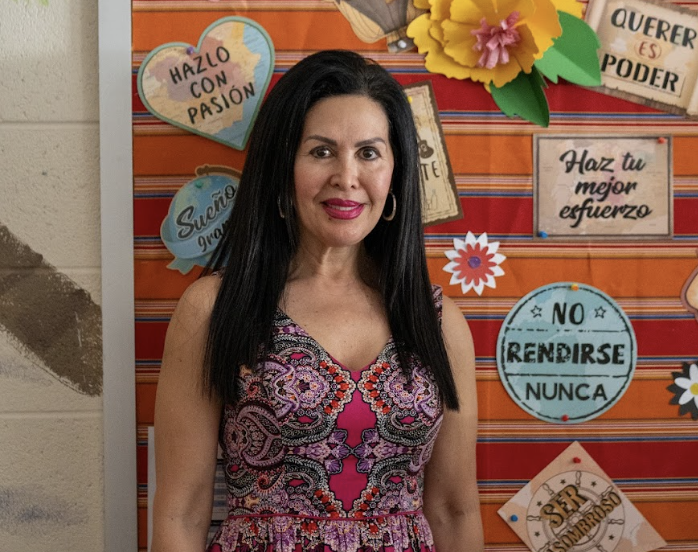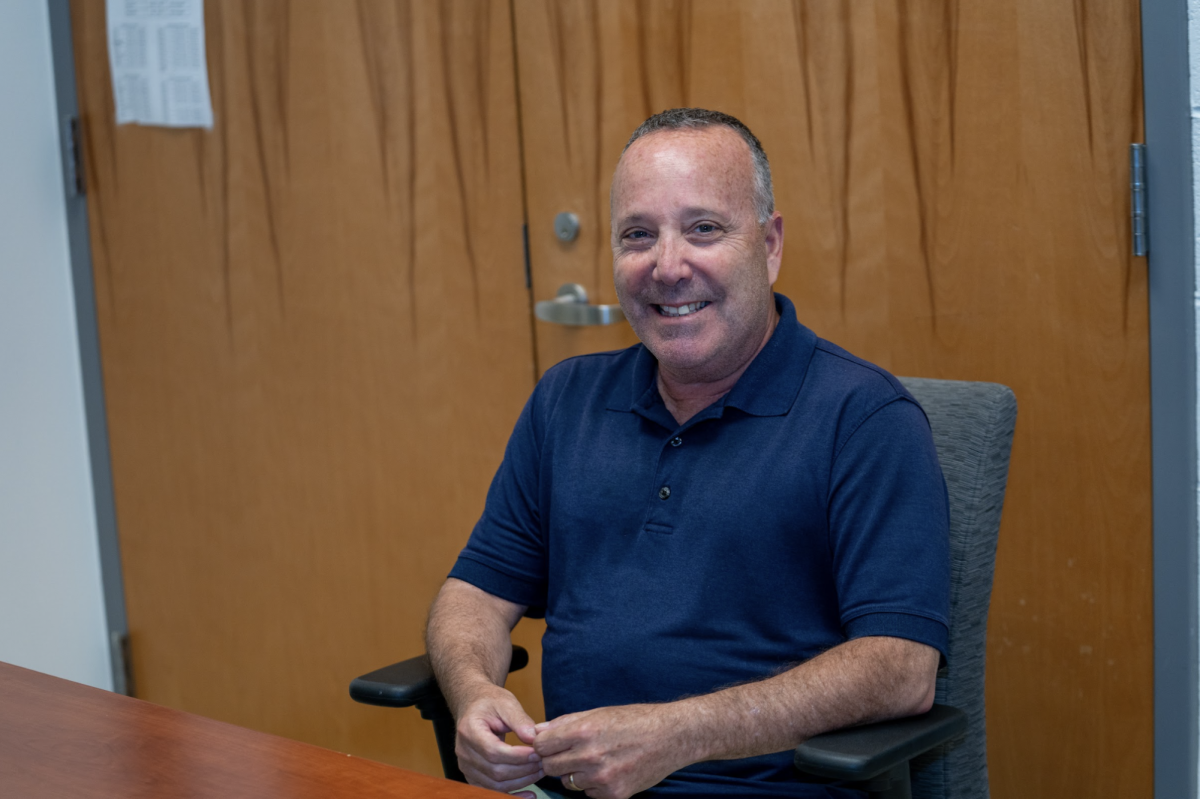Dave Neustadter is an executive producer at New Line Cinema, known for his work on the widely successful films “The Conjuring,” “It” and “Shazam!” Getting his start in the movie industry as an intern in 2003, Neustadter found his niche in the horror, comedy and superhero genres. The Black and White sat down with Neustadter to better understand the duties of a Hollywood executive and his creative process during the development and release of a film.
Responses have been edited for length and clarity.
The Black and White: Take us through the job of an executive producer.
Dave Neustadter: My job is to primarily oversee movies from beginning to end. I’m involved in buying scripts, hearing pitches and reading treatments and magazine articles. Anything that can become a movie, I hear it, read it, decide if I want to buy it and, from there, develop it.
A film can come in any sort of incarnation. Sometimes, it already has writers and directors attached, sometimes it doesn’t. If it doesn’t, if we have a writer but not a director, we’ll develop a script and then find the director. After that, we’ll try to put the cast together, package the whole movie, then go into production.
I can have multiple projects at once, and then I’m involved in the “post” process. In the post process, after the Director’s Cut, we the studio see the film, test movies and decide if we need additional photography.
We’re there from the moment we buy something until the moment it gets released.
B&W: In your opinion, what makes a good pitch? What are you looking for when a director or a writer comes in with an idea?
DN: I work at a movie studio primarily focused on theatrical releases. I’m always looking for ideas that can work with a worldwide audience, that are original, noisy and then, in success, franchisable.
B&W: When mapping out production, what qualities do you look for in a director?
DN: We do a lot of horror and comedy. I’m always looking for horror filmmakers who, I think, watching either their shorts or previous films, know how to craft scares and build tension. The same thing with comedy filmmakers — they know how to get great comedic performances or, if they were writer-directors, they came up with a really fun, new, fresh comedy idea that will attract a wide audience.
B&W: Is there any different approach you’ll take with a horror film versus a comedy film? Anything that you’re doing differently in the process when you’re looking for actors or directors, or are there people who could do both?
DN: They’re very different muscles, but I don’t think any director wants to get pigeonholed into a genre. I think filmmakers, just like any fan of movies, have their favorite genres. Even as a studio executive, I think I offer more value in certain genres than others. Filmmakers are the same way; there are genres that they are more attracted to. Many filmmakers organically want to stay in the genres they like, but then they want to do a big action movie like James Wan, who did “Insidious” and now has done “Furious 7” and the Aquaman films. Directors go and play around in different genres.
B&W: Do you ever begin a film without a completed script?
DN: I’ve worked on scripts that have taken 12 years to get all the pieces right, but you never go into production until the entire creative team feels you have the best script. You need the best script to attract the best director and cast. It all starts with the script and you need the best version to make the best movie.
B&W: What specifically attracted you to the horror genre?
DN: I love being in the audience when you have a really scary movie. Seeing it both as a fan and as someone who worked on the movie, it’s the perfect theatrical experience. Audiences come together, and they’ll reach forward, grab each other’s shoulders, push each other, scream and laugh together. It’s a beautiful thing when you’ve made a truly scary movie to watch people lose their minds, then want to see it again and tell their friends about it. It’s infectious.
B&W: Are there any horror movies that have particularly inspired you and the work you do?
DN: I love the horror movies that caught the zeitgeist of everyone beyond just horror fans — “The Exorcist,” “Candyman,” the original “Scream,” the original “Blair Witch” — movies that once they were released on a Friday, me and all my buddies would drive 100 miles to go find where we could find a theater. Then some movies predated me going into the movie theater, like the first “A Nightmare on Elm Street” and the first “Friday the 13th.” I love those kinds of movies because they are scary as hell, but also because even people who hate horror think “I have to watch it.” I always wanted to work in horror movies that I felt horror fans would love and say, “I got to see it, too.”
B&W: As you continue to create sequels and legacy sequels, how do you ensure that films stay fresh, or do you sometimes lean into the tropes that have made previous films so popular in the past?
DN: We take the “Conjuring” franchise very seriously. It’s a big part of what New Line does. I think one of the reasons we don’t want to just make “Conjuring 123,456,789” is that we want every film that builds the brand to have a different taste, flavor and aesthetic. And then even with the main “Conjuring” films themselves, which are the flagship of the brand’s universe, we want to make sure that we get a different case file from a different period each time. We want to make sure that audiences never feel we’re just making a sequel for a sequel’s sake, rather there’s always an organic, distinct, unique, fresh reason for every movie that comes out of the franchise.
B&W: When you’re building a franchise, how do you ensure that you can plant the breadcrumbs for a future film but also not take over?
DN: My philosophy is to only talk about the sequel once you’re done with the film. We don’t really lay any breadcrumbs for sequels. We just try to make the best movie each time, and then the audience tells you what, for a horror movie, for example, demonic entities they like. “Annabelle” was made because Annabelle was the star of “The Conjuring.” “The Nun” was made because audiences responded well to the character in “The Conjuring 2.” “The Conjuring 2” also had a creature called The Crooked Man, but audiences didn’t respond to The Crooked Man. The audience dictates the direction that we go, not us trying to convince the audience otherwise.
B&W: Is there any project you’ve worked on that you’re most proud about?
DN: The first “Conjuring” will always have a special place in our hearts because we were so lucky and serendipitously fortuitous to get James Wan attached after “Insidious.” He really had the movie in his head from the first time he read the script, and he developed the script into what it became.
I’m so proud of the “It” films. Andy Muschietti masterfully executed the Stephen King classic novel, knowing what these movies needed to be. For many people at the age of 13 or so, the first R-rated movie they ever saw was “It,” so I take a lot of pride in that.
On the comedy side, “We’re the Millers” will always have a special place in my heart. The way it came together with that ensemble, from Jennifer Aniston to Mark L. Young. Everyone was kind of perfect for their roles, and Rawson Marshall Thurber knew what that movie needed to be and directed the hell out of it.
We love all the movies that we have worked on.
B&W: How do you approach any creative differences that you might have with a director or actor? What is your process for working through some of the problems that might be in a production?
DN: Collaboration. First, I think this is a collaborative process. You want to work with people whose mentality is the best idea wins.
When you’re in post and when you’re previewing a movie, I think the audience wins. You want to make the movie that is most satisfying to the audience.
B&W: How did you determine a short film like “Lights Out,” would work as a full 90-minute horror movie?
DN: The two-and-a-half-minute short took the town by storm and was so smart that it had two great scares: the great sequence in the hallway and a great closing scare. The concept was so binary, in that you’re safe in the light and dead in the dark because of an entity. It felt like a really smart way to make a low-budget genre movie, and it was a magic moment where the concept and the filmmaking were fantastic.
Then you meet with the director David F. Sandberg, and he’s a genius. You can already tell he’s going to be great to work with — so it just magically came together. Also, Eric Heisserer, who’s one of the best genre screenwriters, nailed it. We’d worked on “A Nightmare on Elm Street” (2010), but he also had written one of the best scripts I’ve ever read: “Arrival.” He turned “Lights Out” into a fully fleshed-out story, and David already knew how to make the scares work. It was just a collection of the right talented minds at the right time.
B&W: What’s your dream project that you would love to collaborate on in the future?
DN: Outside of the genres that I work in, I would love to make an inspirational true sports story. They’re hard to make, but as someone from Indiana, home of the trifecta of “Breaking Away,” “Rudy” and “Hoosiers,” I’ve always desired to make a special, true sports story.
I love magical realism. “Big Fish” is one of my favorite movies of all time, so if I ever had the opportunity to work with a movie that dealt deeply with magical realism that would be a lot of fun.
B&W: What’s on the horizon for you after your work on “Evil Dead Rise” and “The Nun II” this past year?
DN: We’re in production on “Mortal Kombat 2.” Right now, we’re shooting that out in Australia. And I think there’s probably another “Final Destination” movie on the horizon and another “Conjuring” movie, too.
B&W: Is there anything else you’d like to add? Anything else you think readers and fans might want to know?
DN: In general, it’s been a crazy few years for the movie business, but it’s so exciting to have seen the extent of the success of movies like “Barbie,” “Oppenheimer” and “The Super Mario Bros. Movie” and such great horror movies over the last 12 months. With “Smile,” “Barbarian,” “Talk to Me” and “The Boogeyman,” all these movies have cool, exciting horror filmmakers.
The pandemic was a rough time for theatrical releases, but I’m optimistic that audiences still want to go out, see the lights go down and escape for a couple of hours.

















